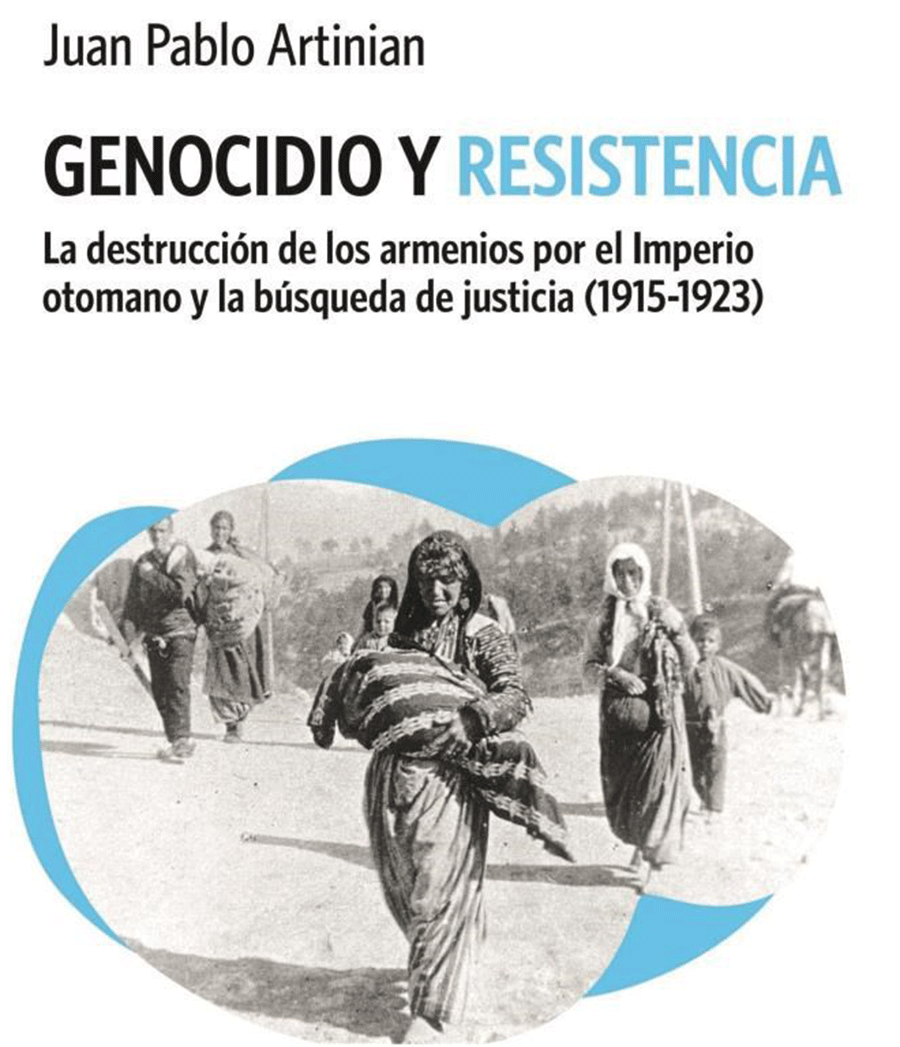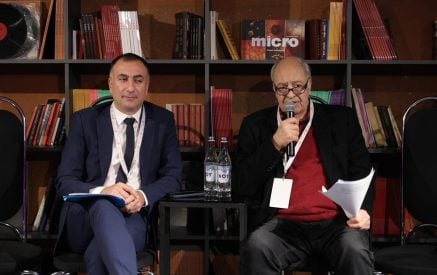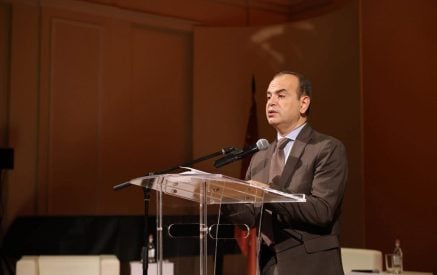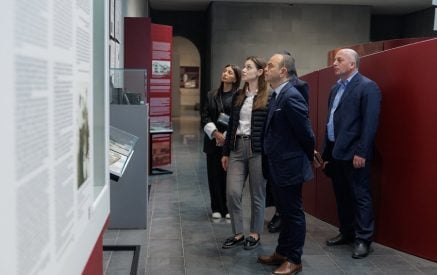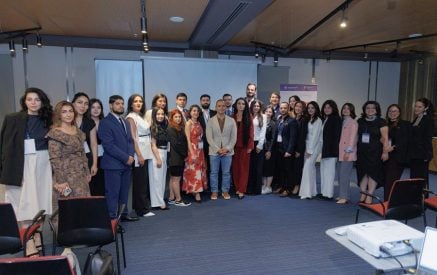Juan Pablo Artinian, Ph.D.
Genocide and Resistance, my latest book, has recently been published in Argentina by University of Buenos Aires Press. My goal in writing this book was to insert the reader immediately and directly into the history of the Armenian Genocide. My intention was to reconstruct for readers not only the persecution and pain of 1915 but also the journey of resistance that these women and men undertook to escape, to survive and to seek justice.
Writing can be an act of resistance. Writing about the Armenian Genocide is to revisit a trauma that runs through our family. This trauma endures, but writing about it brings forth the possibility that it might be healed.
Read also
The path that unites past and present is made up of voices, memories that have resonated even in the silence of the bodies belonging to its survivors, my grandparents among them.
I started writing this book sometime in 2014, months after defending my doctoral dissertation at SUNY Stony Brook. Too much has happened in the years since, especially in the past three years: a global pandemic and a war in which the followers of actors already known attacked while proclaiming their genocidal intentions. During the writing of this book, and later, during my search for a publisher, I too became someone who resisted.
This book is intended for readers who want to know more about the Armenian Genocide, which has not yet been given sufficient visibility and which is, unfortunately, still an object of denial. To have my work published by the University of Buenos Aires Press, which is associated with my alma mater, was an honor. I earned a bachelor’s degree in history from an Argentine university, and later, thanks to a scholarship, received a master’s degree and a doctorate from SUNY Stony Brook. I have been teaching classes on genocide and human rights at various universities in Argentina for several years. These classes are designed both for local students and for exchange students who come from all over the world, including the United States.
It is important to note that Argentina is the only country in the world whose three branches of government have recognized the Armenian Genocide: the executive in 1987, the legislative in 2007 and the judicial in 2011. Efforts made by the Armenian diaspora in Argentina contributed to the verdict of the Permanent People’s Tribunal of 1984 and to the Whitaker Report, which was issued by the Sub-Commission on the Promotion and Protection of Human Rights at the United Nations in 1985.
Meanwhile, the 1985 trials of the Argentine military juntas, presided over by Judge León Arslanian, constitute another important contribution to the defense of human rights. It is this intersection between the actions of the global diaspora and the actions undertaken in defense of human rights in Argentina’s political context — as seen from comparative and universal perspectives — that I wanted to explore in my work.
In order to write this book I examined a significant portion of the extant bibliography on the subject that has yet to be translated into Spanish. I also reviewed written documents, delved into the analysis of visual sources ranging from paintings to films, and analyzed the testimonies of survivors.
I believe that humanity goes through these extreme experiences in different ways. One of my grandmother’s phrases was that she had lived through hell and then, in Argentina, found paradise. Twenty years ago, I interviewed survivors of the Genocide in the nursing home that serves the Armenian community in Argentina.
At the time, I was a young history student at the University of Buenos Aires and had begun working as a teaching assistant. These interviews with survivors, most of whom were women, allowed me to combine my professional enthusiasm for history with my own desire to learn about my roots. Although my grandmother had never talked to me specifically about the Genocide, my mother interviewed her a few years after the Malvinas/Falklands War of the early 1980s. Ana, my grandmother, described in thickly accented Spanish how she had escaped. I included part of her testimony in this book.
Over the course of my research the following questions arose. Why were the actions taken by the Genocide’s survivors minimized in many of its accounts? How can we understand the complex networks of resistance that were created to resist the cruelest and most violent forms of state authoritarianism? The questions posed in this work are intended not only as an opportunity to rethink this historical case study but also as an occasion to examine other instances of extreme or genocidal state violence committed against other minority populations in modern times.
The first three chapters of the book are organized chronologically so as to describe the Genocide. The first contains a brief historical contextualization of the Armenians, their place in the Ottoman Empire and the rebirth of the Christian minority. International treaties, the emergence of political parties and the massacres carried out by Sultan Abdul Hamid II from 1894 to 1896 are also analyzed. The second chapter deals with the process of systematic annihilation that began with the targeted killing of the Armenian community’s political leaders, intellectuals and business leaders on April 24, 1915. This chapter also analyzes the extermination of Armenians on the front lines of the First World War by their comrades-in-arms in the Ottoman army and the deportation of Armenian civilians to the deserts of Syria and to concentration camps.
The book’s third chapter traces the forms of resistance, self-defense and self-preservation employed by the Armenian community during the attempted annihilation. In addition, analyses of the Istanbul Trials that took place after the war and of the Turkish nationalist movement are included. The book then describes the founding of the Republic of Armenia in 1918, the offensives launched by Turkish nationalist forces and the Sovietization of that ephemeral state in 1920. Lastly, the book contains descriptions of the attacks carried out against surviving Armenians in Asia Minor by the Turkish nationalist movement and of the operation to find those responsible for the Genocide.
The book also addresses the politics of denial. The effects of denialism, its various stages and the alternatives to this discourse are presented as contemporary issues, both for Armenians and in Turkish civil society. Chapter five addresses the question of how the exterminations of 1915 have been represented in the works of painter and survivor Arshile Gorky and in the films of Atom Egoyan and Terry George. The book then examines the effects of the impunity that the perpetrators of the Armenian Genocide enjoyed and its connection to the Holocaust. Perspectives on and opportunities for the potential acknowledgement of the Armenian Genocide are explored in the book’s final chapter.
During the years I spent researching and writing this work, my family, friends and many of my colleagues gave me invaluable help and support. I would like to offer my thanks to my Argentine colleagues and especially to Mariano Ben Plotkin — who read the manuscript and suggested critical contributions to it — and to José Emilio Burucúa, who recommended me to the University of Buenos Aires Press. I was also honored that José Emilio presented my book at the University of Buenos Aires School of Law.
This work was the product of almost two decades of research and reflection on an unpunished crime. In addition to describing the destruction of more than a million human beings during the first years of the twentieth century, this book seeks to ask the reader to reflect, from an ethical standpoint, on issues relating to genocide, memory and the ways in which trauma is represented. I believe that, through education, reflection and dialogue, humanity can begin — in the twenty-first century — to travel along a different and more loving path.




















































